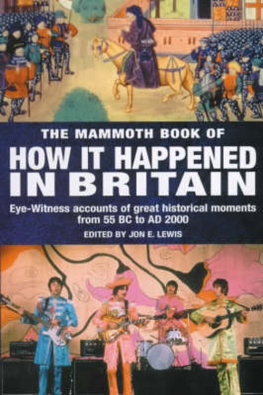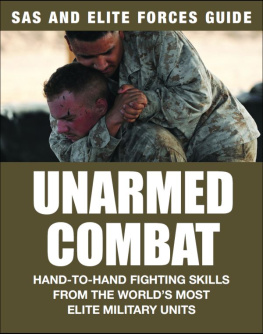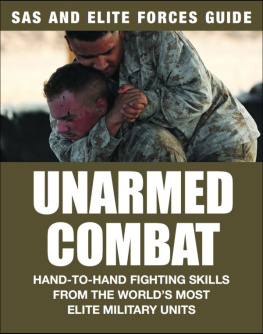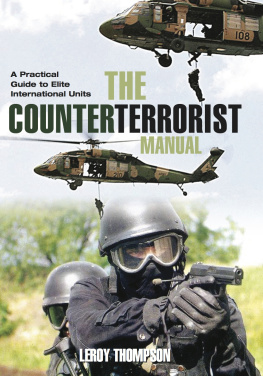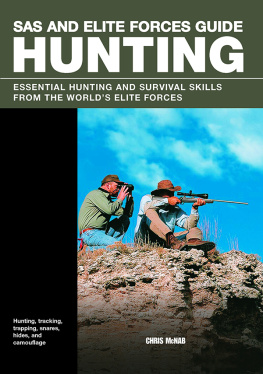THE MAMMOTH BOOK OF
THE SECRETS OF
THE SAS
AND ELITE FORCES
Also available
The Mammoth Book of Arthurian Legends
The Mammoth Book of Awesome Comic Fantasy
The Mammoth Book of Battles
The Mammoth Book of Best New Horror 2000
The Mammoth Book of Best New Science Fiction 13
The Mammoth Book of Bridge
The Mammoth Book of British Kings & Queens
The Mammoth Book of Cats
The Mammoth Book of Chess
The Mammoth Book of Comic Fantasy
The Mammoth Book of Erotica (New Edition)
The Mammoth Book of Endurance and Adventure
The Mammoth Book of Gay Erotica
The Mammoth Book of Haunted House Stories
The Mammoth Book of Heroic and Outrageous Women
The Mammoth Book of Historical Erotica
The Mammoth Book of Historical Whodunnits
The Mammoth Book of How It Happened
The Mammoth Book of International Erotica
The Mammoth Book of Jack the Ripper
The Mammoth Book of Jokes
The Mammoth Book of Legal Thrillers
The Mammoth Book of Lesbian Erotica
The Mammoth Book of Lesbian Short Stories
The Mammoth Book of Life Before the Mast
The Mammoth Book of Locked-Room Mysteries and Impossible Crimes
The Mammoth Book of Men OWar
The Mammoth Book of Murder
The Mammoth Book of Murder and Science
The Mammoth Book of New Erotica
The Mammoth Book of Oddballs and Eccentrics
The Mammoth Book of Private Lives
The Mammoth Book of Seriously Comic Fantasy
The Mammoth Book of Sex, Drugs & Rock n Roll
The Mammoth Book of Short Erotic Novels
The Mammoth Book of Soldiers at War
The Mammoth Book of Sports & Games
The Mammoth Book of Sword & Honour
The Mammoth Book of True Crime (New Edition)
The Mammoth Book of True War Stories
The Mammoth Book of Unsolved Crimes
The Mammoth Book of War Correspondents
The Mammoth Book of UFOs
The Mammoth Book of the Worlds Greatest Chess Games
THE MAMMOTH BOOK OF
THE SECRETS OF
THE SAS
AND ELITE FORCES
HOW THE PROFESSIONALS FIGHT AND WIN!
Edited by Jon E. Lewis
ROBINSON
London
Constable & Robinson Ltd
5556 Russell Square
London WC1B 4HP
www.constablerobinson.com
First published in the UK as
The Handbook of the SAS and Elite Forces,
by Robinson Publishing Ltd 1997
This revised edition published by Robinson,
an imprint of Constable & Robinson Ltd 2002
Collection and editorial material copyright Jon E. Lewis, 2002
All rights reserved. This book is sold subject to the condition that it shall not, by way of trade or otherwise, be lent, re-sold, hired out or otherwise circulated in any form of binding or cover other than that in which it is published and without a similar condition including this condition being imposed on the subsequent purchaser.
A copy of the British Library Cataloguing in
Publication data is available from the British Library
ISBN 1-84119-585-5
eISBN 978-1-78033-735-7
Printed and bound in the EU
10 9 8 7 6 5 4 3 2 1
CONTENTS
Part 1
ELITE UNITS
Chapter 1
THE BRITISH ARMY SPECIAL AIR SERVICE BRIGADE
THE SAS: PROTOTYPE OF THE SPECIAL FORCE
The SAS began life in the desert. It was founded by David Stirling, a lieutenant in the Scots Guards, who had fought with No.8 Commando in the Mediterranean. Injured during parachute training, he drew up plans for a new type of long-range commando organisation while hospitalized in Cairo. He presented them through General Neil Ritchie to the perceptive commander of British Forces in the Middle East, General Auckinleck, and was rewarded with promotion and command of the L detachment, Special Air Service Brigade. The unit designation was a fiction intended to deceive but the SAS had been born.
Stirling planned the SAS as a strategic force, attacking targets deep in the enemy heartland where they thought they were safe. From air bases in North Africa to the valleys of southern France, the SAS inflicted constant damage and tied down thousands of enemy soldiers guarding installation and sweeping the countryside for these elusive raiders.
The SAS was disbanded after the war, but resurrected within two years. A territorial regiment, 21 SAS, was created and some members volunteered for a new organisation, the Malaya Scouts (SAS). The latter were formed for counter-guerrilla operations against the communist rebels in Malaya. In 1952, this unit was redesignated 22 SAS and spearheaded the jungle war. Stirlings original belief that a small elite force could achieve results out of all proportion to its size was proved correct a second time.
As the British Empire disintegrated, the SAS were involved in guerrilla wars from Asian jungles to the Middle East. From 1969 the regiment was committed to action much closer to home, as handfuls of men were detached to Northern Ireland. SAS involvement was on a small scale until Prime Minister Harold Wilson publicly announced in January 1976 that he was sending in the SAS. This was without reference to the regiment, which had very few men available when this politically inspired statement was issued.
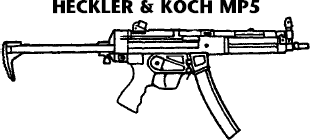
The Heckler & Koch MP5 machine pistol has become one of the most widely used weapons of its type. When the SAS stormed the Iranian Embassy in London in 1981, TV viewers in the UK saw it in action for the first time. British airport police were also issued with the MP5 in 1986 following the terrorist attacks at Rome and Vienna. Firing from a closed bolt, the MP5 is probably the most accurate sub-machine gun in production today. It is manufactured in a number of variants, including silenced or cut-down weapons for clandestine operations and is available with telescoping or fixed stocks. Although the MP5 is more complex and considerably more expensive than most other SMGs, its accuracy means that it is the favoured weapon of special operations and hostage rescue units around the world.
Specification
Cartridge: 9-mm parabellum; Weight:3kg; Length: (stock folded) 49 cm; Cyclic rate of fire: 800 rounds per minter; Magazine: 15 or 30 round box; Effective range: 200m.
Assessment
Reliability *****; Accuracy *****; Age ***; Worldwide users ***.
The SASs counter-terrorist role was developed in response to the massacre of the Israeli athletes in Munich during 1972. In 1980 the world saw for the first time the sinister black combat suits and gas masks of the SASs CRW (Counter Revolutionary Warfare) team. An SAS team stormed the Iranian Embassy in London releasing the hostages and killing all but one of the terrorists a stunning success.
In 1982 the Argentine invasion of the Falklands gave the SAS the opportunity to demonstrate their more traditional skills. SAS patrols ranged behind enemy lines to scout their positions and raid vital targets.




